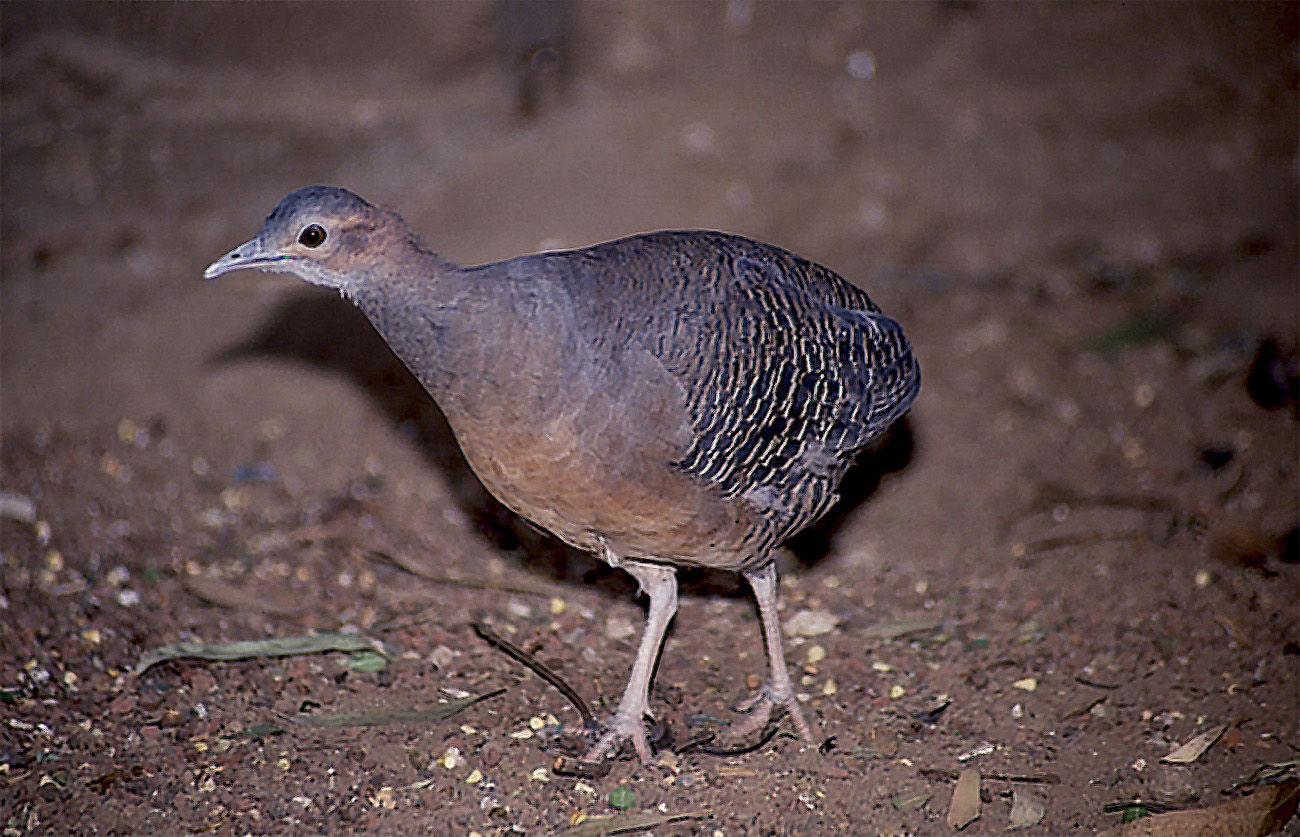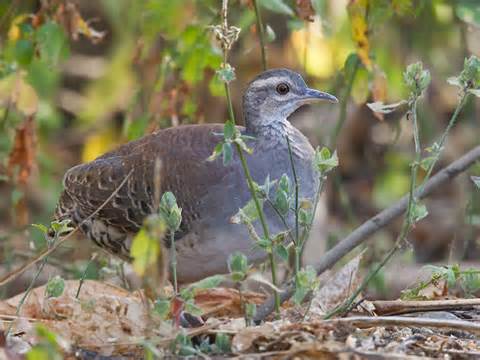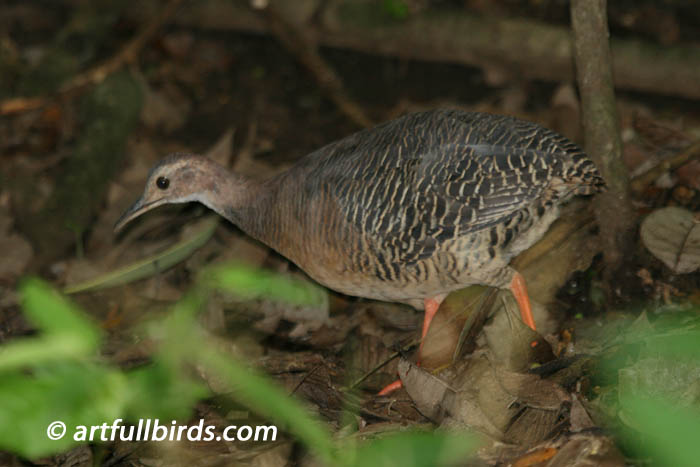
Crypturellus cinnamomeus
TAXONOMY
Crypturellus cinnamomeus Lesson, 1842, La Union, El Salvador.
OTHER COMMON NAMES
English: Rufescent tinamou; French: Tinamou cannelle; German:
Beschtinamu; Spanish: Tinamъ Canelo.
PHYSICAL CHARACTERISTICS
10.8 in (27.5 cm), 1 lb (440 g). Barred black on back and
flanks; white throat and cinnamon or rufous cheeks and breast.
DISTRIBUTION
This tinamou, with nine subspecies, is widespread in Central
America and has populations in Belize, Costa Rica, El Salvador,
Guatemala, Honduras, Mexico, and Nicaragua. Its
DISTRIBUTION
extends farther north than that of any other tinamou.
HABITAT
Thick undergrowth, with an overstory—a foliage layer in a forest
canopy including the trees in a timber stand—ranging from
arid scrub to secondary forest.
BEHAVIOR
The monotonous call sounds like a steam whistle when heard
at close quarters. The bird lives singly, in pairs, or in family
parties. When disturbed it walks, rather than flies, away.
FEEDING ECOLOGY AND DIET
Feeds on fruit, seeds, and insects, searching for food in small
parties that attract attention by crackling dry leaves as they feed.
REPRODUCTIVE BIOLOGY
The nest is placed on the ground at the base of a tree. The
clutch is usually three, but may be up to seven glossy purplish
eggs. Hybrids have been found between this species and the
slaty-breasted tinamou.
CONSERVATION STATUS
Not threatened.
SIGNIFICANCE TO HUMANS
Because it is so unwilling to fly, it is not regarded as an important
game bird.
Photo Gallery of - Thicket tinamou




 Animalia Life
Animalia Life